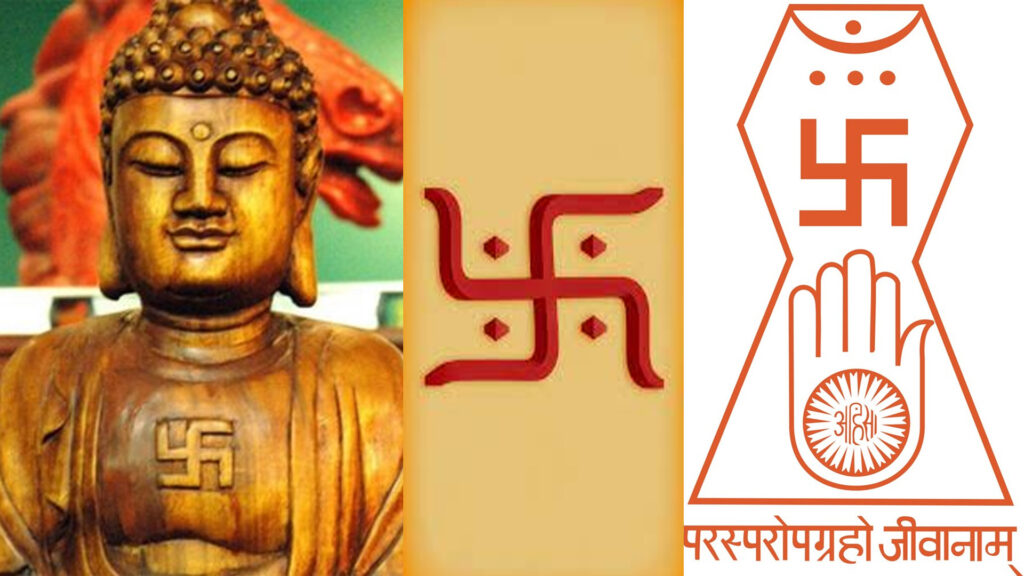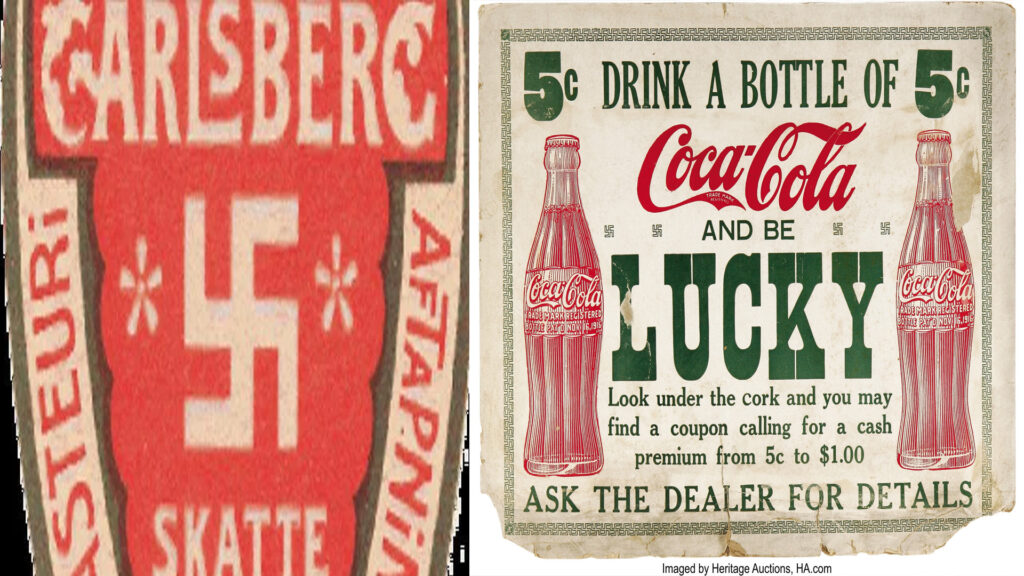Some important information about the swastika symbols this really the symbol of Hitler’s party?
What is the connection of Swastik symbol with Hinduism?

The swastika symbol has been a sacred symbol in Hinduism, Jainism and Buddhism for centuries. It represents luck, auspiciousness and prosperity.
In Hinduism, this symbol is used during house entry, festivals, auspicious deeds and religious ceremonies.
However, in Australia, Canada and the United States it is considered a powerful stimulant symbol. In the 1940s, this symbol was widespread and popular in Western countries. It has been considered a symbol of prosperity and wealth.
Hitler used the ‘Hockenkruuise’ or hooked cross on the flag of Nazi Germany. Because it looked like a swastika.
Therefore, after World War II, the symbol became a symbol of the painful memory of the Holocaust among people in the West, especially among Jews.
Swastik is a popular symbol not only in India but all over the world. It has been used by humans for thousands of years.

What is the meaning of Swastik?
In Hinduism, Jainism and Buddhism in general, the word “swastika” is derived from the root “su” and “asti”.
“Su” means “health” and “Asti” means “let be”. The word Swastik is a combination of these two.
The symbol of this word is a figure with eight right angles, with vertical and horizontal lines intersecting each other and lines extending from each end. While making the Swastik, four spaces are left in it and dots are also placed in them.
This symbol is used in accounting books, holy books, stores, vehicles, baby naming ceremonies and marriage ceremonies etc.
Swastik mantra is also chanted while making this sign in religious ceremonies and weddings.
It is prayed to Varuna, Indra, Surya, Guru and Garuda for health and prosperity according to Hindu belief. Many concepts are associated with this symbol, such as the four directions, the four seasons, the four ages, the four shastras, the four goals of life (virtue, material, happiness, planet), the four stages of life (childhood, family status, penance, Sanyas) etc.
According to Ajay Chaturvedi’s book “The Last Wisdom of the Swastik”, “Satyo in Vedic mathematics means a four-cornered cube. According to Hindu philosophy, it is the fourth state after waking, sleeping and dreaming.
Among Buddhists in Japan, this symbol is known as “Mansi” and represents the footprints of Gautama Buddha.
According to Chaturvedi, Hitler used this swastika symbol in politics without understanding its meaning or significance in Hindu philosophy.

Hokenkruuiz or hook cross
In 1871, the German archaeologist Heinrich Sislemann, while excavating the ancient city of Troy (in present-day Turkey), discovered about 1,800 types of ‘swastika’ symbols on pottery.
It is like a swastika. They saw it in conjunction with existing artifacts of German history.
Anthropologist Gwendolyn Lake wrote that the inhabitants of Troy were Aryans. Similarities found in these pottery led the Nazis to believe that they were evidence of racial continuity between the Aryans and themselves.
It is believed that the main reason why Hitler adopted the swastika as a party symbol was the similarity between the Germanic language and Sanskrit. Through this analogy, the Nazis convinced the Germans that Indians and Germans were of the same “pure” Aryan origin.
When Adolf Hitler was looking for a symbol for his newly founded party in the 1920s, he used the right-wing swastika “Hockenkruuiz”.
In 1933, Hitler’s Minister of Propaganda, Joseph Goebbels, passed a law banning the commercial use of the swastika.
German Supreme Ruler Adolf Hitler mentions the choice of the Nazi flag, its colors and symbols in Chapter 7 of his autobiography “Mein Kampf”.
According to Hitler, the new flag represented the ‘Third (German) Reich’.
The Nazi Party flag was introduced in the mid-summer of 1920. It featured a black ‘Hockenkruuise’ within a white circle on a red background.
This image shows the swastika tilted to the left at an angle of 45 degrees.
Red was the symbol of social movements. White color represents the ideology of nationalism. The swastika symbolizes the struggle and victory of the Aryan people.
In his book ‘From Gluttony to Genocide’ (‘The Sign of the Cross: From Gluttony to Genocide’) Dr. Daniel Rancour Leferrer has written that Hitler spent his childhood in a Benedictine Montessori in Austria.
Where the swastika symbol is carved in many places. So he said he may have chosen this symbol to recall his childhood.
During World War II, the Nazis killed approximately 600,000 people under this flag, including Jews, the disabled, Romani and Sinti, Syahfam, Slavic, homosexuals, Soviets, and Poles. Jews were persecuted by Hitler’s forces in Germany and Nazi-occupied Europe.
For the millions of Jews who died during the Holocaust, the Hockenkrüoise’ or ‘Hooked Cross’ is a symbol. Which, brings back horrible memories.
In recent years the symbol has been used by ‘neo-Nazis’ and many white supremacists.
Use of swastika since prehistoric times
In 1908, a bird carved in ivory with a swastika was found in Ukraine.
It is considered to be the oldest form of swastika. Carbon dating indicates that the artifact is at least 1,500 years old.

This symbol can be found on ancient Christian tombs, tombs in Rome, the Lalibela stone church in Ethiopia and the cathedral church of Cordoba in Spain.
An encyclopedia on genocide says: “The swastika was used in Eurasia 7,000 years ago. It represented the speed and motion of the sun in the sky. Experts believe that this symbol may have become popular throughout Europe during the Bronze Age.
Some of the remains found at Harappan civilization sites in present-day Pakistan bear swastika symbols.
In the 19th century, Thomas Wilson wrote in his book The Swastika: The Earliest Known Symbol and Its Migrations that the Swastika symbol was used in the ancient world.
The swastika symbol is also found on sheets, shields and jewellery. Some believed that the image represented a comet.

From beer to Coca-Cola
The ancient Greeks used the swastika symbol on their jugs and vases. According to Norwegian belief, the swastika is the hammer of the Norwegian god “Thor”.
In the West the swastika was used freely in advertising and clothing. It was also once used in Coca-Cola advertisements.
Before the Nazis used the swastika, the famous Danish beer company “Carlsberg” had a swastika in its logo.
Until a few years ago, the official seal of the Finnish Air Force featured the swastika.
In Great Britain, the swastika was used by the Scouting movement and was also issued as a badge.
NRIs are trying to create awareness about the difference between the Nazi seal and the auspicious sign.
“Hockenkruuiz” is bent to the left at an angle of 45 degrees. But the swastika is directly to the right.





